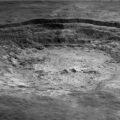During my routine morning jog in the woods, I saw four pairs of ducks swimming in a narrow channel. From their dance, which looked at times like wrestling, it was apparent that their “art of dating” is focused on collecting enough information to decide whether to have offspring with a particular partner.
Raising offspring is a tedious task that benefits from good genetics and exceptional companionship skills. Correspondingly, the ducks selected a partner based on genetic and behavioral qualities.
This realization hit me close to home. I lead the Galileo Project, whose space-research goal is to rendezvous and take a close-up photograph of an interstellar object that an extraterrestrial technological civilization might have manufactured. An object of interest must appear and behave differently than known asteroids or comets, such as the first interstellar object discovered by Pan STARRS in October 2017, `Oumuamua, which is gone by now.
`Oumuamua possessed an extreme – most likely flat – shape, and was pushed away from the Sun without showing any sign of outgassing. The resolve to chase a particular object mirrors a dating decision.
The Galileo research team must be selective because the space mission could cost a billion dollars. In other words, “To rendezvous or not to rendezvous?” is a billion-dollar question. That is one expensive date…
The Galileo Project’s team will need to collect enough data from remote telescopes to decide whether an object is as unusual as its first unrequited love, `Oumuamua, was.
And just as in dates, we should always verify that the partner is not related to our family. In September 2020, Pan STARRS discovered the object 2020 SO, which also exhibited a push away from the Sun without a cometary tail, as `Oumuamua did. This object turned out to be artificial for sure, a rocket booster launched by NASA in 1966 and pushed by the reflection of sunlight from its thin walls.
We should also keep in mind the remote possibility that a technological civilization predated us on Earth. If it existed hundreds of millions of years ago, any of its relics on the ground would have likely been destroyed by now or buried deep underground through geological activity. However, if this early culture launched equipment to space, some of it might still be around and could be detected by the Galileo Project.
But some argue that they would not waste their time or money on the dating scene of the solar system because there is nothing of interest to be found there. This is a self-fulfilling prophecy that reinforces the notion that we are alone for the simple reason that we choose not to search for others. Of course, we could wait for a partner on a white horse to show up at our front door without any prompting effort on our side. This would constitute the equivalent of waiting for “extraordinary evidence” to show up near Enrico Fermi at Los Alamos in the summer of 1950 when he asked the question: “where is everybody?” without allocating the billion dollars needed to find it in space.
Carl Sagan’s standard: “extraordinary claims require extraordinary evidence” should be supplemented by the amendment: “… and extraordinary evidence requires extraordinary funding.”
Most dating episodes do not end well. But a billion dollars to confirm that a weird object is not extraterrestrial equipment is money well spent. Of course, “experts” trained on solar system rocks would insist that any object in space must be natural and is very unlikely to be artificial in origin. The Greek poet Archilochus wrote, “the fox knows many things, but the hedgehog knows one big thing.” Asteroids or comets are the one big thing known to solar system experts. Narrow-mindedness will not serve them well in discovering new partners on the solar system dating scene. As one of them confessed to me: “`Oumuamua is so weird, I wish it never existed.”
We know from experience that even promising dates do end up in a long-lasting relationship. CERN’s Large Hadron Collider consumed an extraordinary 10 billion dollars without providing extraordinary evidence for supersymmetry. Risk is common practice when exploring the frontiers of science, as well as in the bedroom. We should be willing to accept risk also in our archaeological search for technological relics in space.
Given this perspective, I will continue to seek the funding required for the Galileo Project. As Marcus Aurelius noted in his Meditations, “The art of living is more like wrestling than dancing, in so far as it stands ready against the accidental and the unforeseen, and is not apt to fall.”
Discovering `Oumuamua was certainly accidental and unforeseen, and admitting that it is an object of a type `never seen before’ required wrestling with some planetary scientists.
There is no better way to close my meditations than with another quote from Aurelius’ Meditations: “Dwell on the beauty of life. Watch the stars, and see yourself running with them.” This is indeed the message I received while running in the woods this morning.
Avi Loeb is the head of the Galileo Project, founding director of Harvard University’s – Black Hole Initiative, director of the Institute for Theory and Computation at the Harvard-Smithsonian Center for Astrophysics, and the former chair of the astronomy department at Harvard University (2011-2020). He chairs the advisory board for the Breakthrough Starshot project, and is a former member of the President’s Council of Advisors on Science and Technology and a former chair of the Board on Physics and Astronomy of the National Academies. He is the bestselling author of “Extraterrestrial: The First Sign of Intelligent Life Beyond Earth” and a co-author of the textbook “Life in the Cosmos.”
